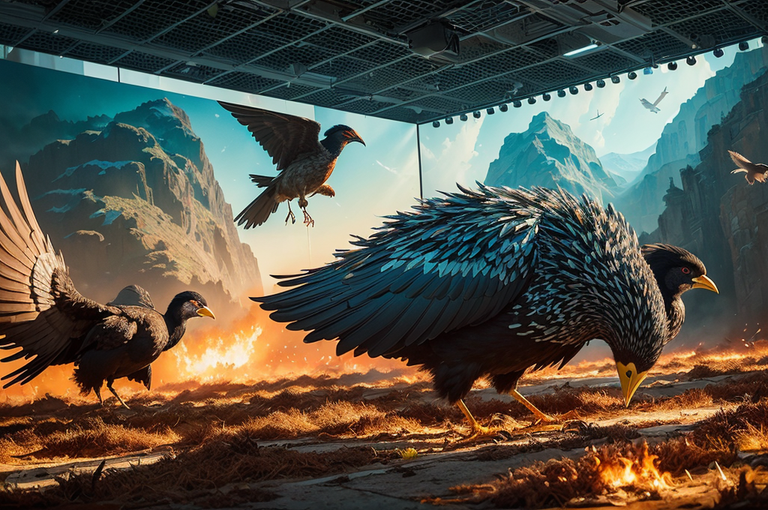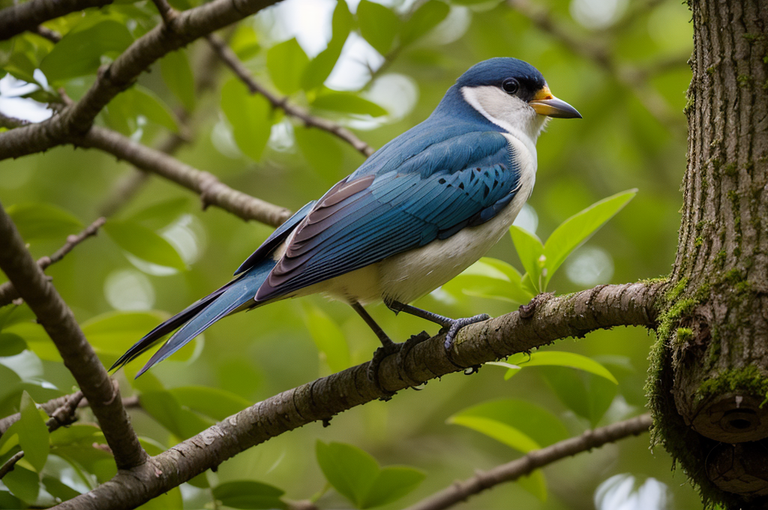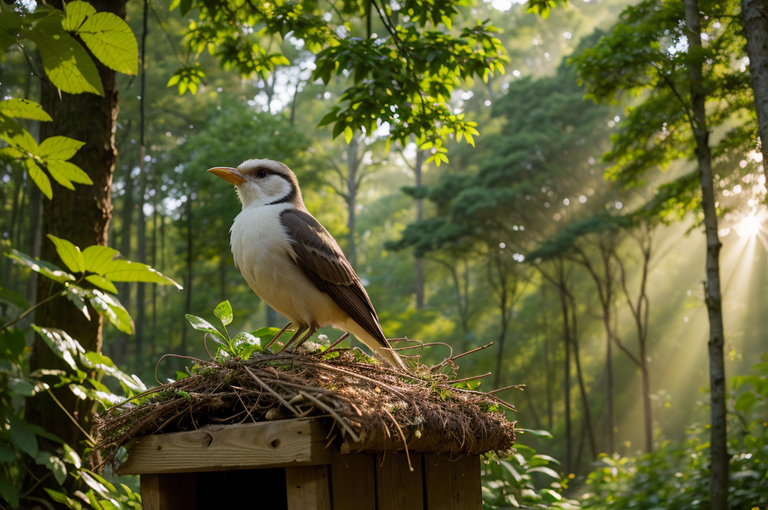Bird Conservation and Enjoyment: Protecting Avian Species through Sustainable Practices and Birdwatching

Two-thirds of North American birds risk extinction due to climate change. Bird conservation, bird feeding, habitat preservation, and mindful landscaping are key to the survival of about 469 species in North Carolina.
The Importance and Impact of Birds
You know, as an ornithologist, there’s always been a special place in my heart for birds, especially NC wild birds. Birds, in all their splendid diversity, hold an undeniable importance in our ecosystem and warrant prompt conservation efforts.
The Vital Role of Bird Conservation
For starters, birds are significant contributors to maintaining sustainable ecosystems. They play crucial roles as Pollinators, seed dispersers, and pest controllers. We owe a lot to their tiny wings, feathered bodies, and singsong voices. Conserving them is not just an act of kindness, but a necessary step towards a balanced environment.
Interconnection of Birds and Human Life
Their significance extends far beyond their ecological roles. It echoes in our everyday lives. Birds add splashes of color and melody to our daily routines, an undeniable richness that would be thoroughly missed should it ever disappear. They reflect humanity’s shared fate with all living organisms in our increasingly interconnected world.
Birds as Indicators of Environmental Health
More so, birds have become our environmental sentinels. They are the proverbial ‘canary in the coal mine’. A decline or change in bird populations is often the first visible indication of environmental threats like pollution, climate change, or habitat destruction. Our wellbeing, in more ways than one, mirrors that of these winged creatures.
So, whether it’s the early birds greeting us at dawn, or the majestic flyers soaring across the evening sky, our winged companions serve invaluable roles. Their conservation is not a favor we do for them, but a significant step towards preserving the harmony of our shared home. For me, every bird—be it the purple martins in your backyard or the majestic eagles of Alaska—is a story waiting to be told, a mystery longing to be unravelled.
Climate Change: A Threat to Wild Birds of NC
From the jaunty cardinals to the majestic eagles, all are at peril as the climate sways out of balance. Like an out of tune symphony, the escalating urgency of shifting climates has irrevocably tipped the scales.
Impact of Climate Change on Birds
In nature’s grand orchestra, it seems the score has been disrupted. The once harmonious life cycles of birds, synced to a natural sheet music, are now in disarray, often needing to speed up or slow down to stay in tune. Early springs push chicks out of the nest before they’re ready; winters arriving late leave high altitudes inaccessible for too long.
Risk of Extinction due to Climate Change
Not too far away, an alarming two thirds of our bird companions may become a part of forgotten lore much too soon. North American species, my most beloved among the wild birds of NC included, stand trembling at the precipice of extinction. The danger, my dear reader, is inaction.
Importance of Addressing Climate Change for Bird Conservation
Addressing this ominous concert of climate change is not just a choice, it’s an obligation. An obligation to future scholars, to nature lovers, to these magnificent creatures themselves, who share our world and color it with their charming diversity. It is only by embracing this truth that the plight of these little aviators can be arrested.
The melody of bird songs echoes our efforts, singing the ballad of their resistance. Will we let them face the music alone, or will we take part in the concert, and save the grand symphony? Only time will tell, but remember, dear reader, the clock is ticking for the wild birds of NC.

Bird Conservation Efforts and Strategies
Just as the day breaks, with the dewdrops glistening on a lone leaf, in my cabin at Wild Birds Unlimited Colorado, I begin my day contemplating bird conservation efforts.
Measures for Bird Conservation
A significant part of bird conservation is slowing down or halting the often rapid decline of endangered species. It’s a role that requires passion as much as it does tenacity, notably when convincing communities of its importance. Conservationists like myself, harness a multifaceted approach that includes everything from educating communities, implementing protection laws to initiating stricter hunting regulations. It’s a symphony between man and nature, bridging understanding and sensitivity.
Preserving Bird Habitats for Conservation
Often underestimated, the preservation of habitats forms the backbone of my bird conservation strategy. Eastern forests and the North Carolina coast, teeming with diverse bird species, remind me of the indispensability of habitats. Whether it’s the duties of a vigilant forest ranger or smart urban planning, every effort plays a crucial role in maintaining this sanctuary for our avian friends.
Role of Feeding in Bird Conservation
And then, we come to nourishing the birds. Feeding birds with carefully selected food has become a strategic measure assisting conservation efforts. By promoting the growth and survival of bird species through careful feeding, we ensure that their song continues to fill the mountains and valleys that we call home. The precise texture of the mealworm or the suitable seed mix can make a world of difference to a tiny songbird, providing it the sustenance it needs to survive and flourish in the wild.
As the dawn prepares to ease into another day, I’m reminded of my father’s wise words, ”Conservation is the lasting song of humanity. It finds its most harmonic notes in the symphony of bird preservation.” Every conservation strategy echoes this song, setting a delicate trail for future generations to follow into the wild.
The Practice of Birdwatching
As Penelope Callaghan, I’ve often found solace amongst the feathered companions in my backyard. Birdwatching, for me, isn’t merely a pastime—it’s a tether bridging the gap between humanity and nature. The cycle of sunrise to sunset, reflected in the rhythm of flight and song, facilitates a connection that feels profound. 💭🦜
Birdwatching: More Than a Hobby
Immersing oneself in birdwatching offers benefits beyond a close encounter with nature’s musical maestros. It affords an opportunity for quiet introspection, a break from the cacophony of our digitized world. As dawn breaks, and the twinkling notes of early risers fill the air, there’s an inexplicable sense of tranquility that envelops you—an experience that continues to lure me into this undulating world of birds.
Landscaping for our Feathered Friends
In my endeavor to bring Wild Birds Unlimited Cherry Hill to my patio, I discovered the stimulating effect of landscaping. The strategic arrangement of trees and shrubs, coupled with birdbaths and nesting boxes, attract birds in hordes. These willing visitors, with their vibrant plumage and melodious calls, transform ordinary gardens into a birdwatcher’s paradise.
Birdwatching: A Lifelong Learning Adventure
The fascinating world of birdwatching beckons all—enthusiasts and neophytes alike. A wealth of resources is at our fingertips: field guide apps, with their extensive databases, online communities that offer camaraderie, and educational opportunities that fuel our curiosity. Seize these tools and embark on this unique adventure.
Embarking on this journey, involving a compelling blend of wonder and science, rekindles the thrill of exploration, amplifies a connection with nature and exposes the mind to the spectacular world of birds. 🌿🐦
Bird Species of North Carolina
North Carolina holds within its expanses a beautiful secret about 469 variances of avian wonder, each a testament to the intricacies of evolution and nature’s artistic prowess. Never is the air ever devoid of hearty bird songs or breathtaking flashes of color, making it a veritable garden for both eager bird watchers and casual observers. Here, names like Eastern Bluebird, Carolina Chickadee, and the mysterious Hermit Thrush are common parlance.
Overview of Bird Species in North Carolina
Our beloved NC wild birds are as diverse as they are captivating. They can range from the vibrant Tufted Titmouse, frolicking amidst the greenery, to the diligent Song Sparrow, forever enrapt in its melodic tirade. Yet, this myriad of living, moving art doesn’t spin the tale in full. For North Carolina is every wild bird’s haven, an abode that provides, nurtures, and cradles.
Notable Bird Species of the Region
In the world of wild birds of NC, there are some who demand a particular mention, their tales woven into the abyss of memories collectible in the arms of Mother Nature. They linger in the recesses long after their songs have quieted down, their flights stilled to stationary frames the Eastern Bluebird, a Kaleidoscope of blues; the Carolina Chickadee with its oversized head and distinct call; the Wood Thrush, revelling in its unique, flute like song; the Tufted Titmouse with its signature ”peter peter peter” call; and the reclusive Hermit Thrush, etching their stories in the hearts of those who dare to partake in nature’s marvelous theater.
Seasonal Migration of Birds in North Carolina
Like Wild Birds Unlimited Colorado or the infinite cornucopia of Wild Birds Unlimited Cherry Hill, our North Carolina birds have their own rhythm to abide by. Some keep their symphonies to our state all year round, daily painting our skies with their vivacious clatters and echoes. Others are travelers, wanderers borne of the wind. They sweep the region with their fleeting presence, their existence reminding us of the changing seasons in an ever constant dance of migration, leaving behind an aura of anticipation and a longing for their return.


